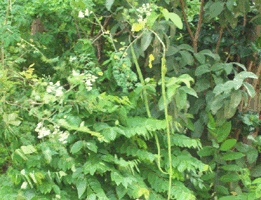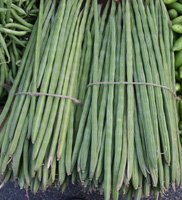Moringa oleifera is the most widely cultivated species
of the genus Moringa, which is the only genus in the
family Moringaceae. English common names include:
moringa, drumstick tree, horseradish tree, ben oil
tree, or benzoil tree.
- For Moringa Seeds
- Moringa Plants
- Moringa leafs
- Moringa power



Moringa oleifera, also known as horseradish tree, bentree, or drumstick tree, is a all tree from India, Pakistan, and Nepal that has been used for generations in Eastern countries to treat and prevent diseases such as diabetes, heart disease, anemia, arthritis, liver disease, and respiratory, skin, and digestive
Contact for Aloe vera plants
9413290070
8619449970
https://www.facebook.com/aloevera32/?ref=bookmarks https://www.indiamart.com/company/50241046/ https://www.indiamart.com/proddetail/aloe-vera-juice-15014922730.html https://www.indiamart.com/proddetail/aloe-vera-plant-15015108912.html https://www.indiamart.com/mahala-kristi-farm-sikar/
Moringa nutrition facts
Moringa oleifera, known popularly as drumstick tree, is a tropical plant grown for its nutritious leafy greens, flower buds, and mineral-rich green fruit pods. It is a well-recognized member of the Moringaceaefamily of trees and thought to be originated in the sub-Himalayan forests of the Indian subcontinent. It possesses horseradish-like root and, hence, known to the western world as horseradish tree. Their young, tender seed pods are popular as murnga in Tamil, and malunggay in the Philippines.
Scientific name: Moringa oleifera.
 |
| Moringa oliefera. Note for foliage, flowers, and pods. Photo courtesy: treeftf. |
Moringa is a drought tolerant, medium-sized, evergreen tree that prefers warm, frost-free climates to flourish. Its tender leaves and twigs can be harvested at any time from a well-established, 1.5 to 2 meters tall plant. Taller plants bear cream-white, small size flowers in clusters throughout the season, which subsequently develop into long slender dark-green, three-sided, edible seedpods with tapering ends. Each pod measures about 6-18 inches in length with constrictions at the seed nodes giving them a typical drumstick appearance. Inside, each pod features fleshy pulp and round pea-sized seed encased inside a wing-shaped coat (hull).
Health benefits of moringa
- Food scientists believe that moringa plant possesses unique nutritional qualities that hold promise to millions of impoverished communities around the world who in need of dietary supplements like protein, minerals, and vitamins.
- Moringa greens (leaves) are an excellent source of protein which is a unique feature for any herbs and leafy greens in the entire plant kingdom. 100 g of fresh raw leaves carry 9.8 g of protein or about 17.5% of daily required levels. Dry, powdered leaves indeed are an excellent sources source of several quality amino acids.
- Fresh pods and seeds are an excellent source of oleic acid, a health-benefiting monounsaturated fat. Moringa, as a high-quality oilseed crop, can be grown alternatively to improve nutrition levels of populations in many drought-prone regions of Africa and Asia.
- Fresh leaves and growing tips of moringa are the richest sources of vitamin A. 100 g of fresh leaves carry 7564 IU or 252% of daily required levels of vitamin-A! Vitamin-A is one of the fat-soluble anti-oxidant offering several benefits, including mucosal repair, maintenance of skin integrity, vision, and immunity.
- Fresh moringa (drumstick) pods and leaves are an excellent sources of vitamin-C. 100 g of pods contain 145 µg or 235% of daily required levels of vitamin-C. 100 g of greens provide 51.7 µg or 86% of daily-recommended intake values of this vitamin. Research studies have shown that consumption of fruits/vegetables rich in vitamin C helps the body develop immunity to combat infectious agents, and scavenge harmful oxygen-free radicals from the body.
- The greens, as well as pods, also contain good amounts of many vital B-complex vitamins such as folates, vitamin-B6 (pyridoxine), thiamin (vitamin B-1), riboflavin, pantothenic acid, and niacin. Much of these vitamin functions as co-enzymes in carbohydrate, protein, and fat metabolism.
- Furthermore, its greens (leaves) are one of the finest sources of minerals like calcium, iron, copper, manganese, zinc, selenium, and magnesium. Iron alleviates anemia. Calcium is essential for bone mineralization. Zinc plays a vital role in hair growth, spermatogenesis, and skin health.
Selection and storage

Moringa pods in a market. Fresh moringa pods and greens can be readily available in the markets all around the season in the tropical and sub-tropical countries of South-East Asia, Philippines, Middle-Eastern, Africa, Caribbean, and in some Central American region. In the USA, the tree grows easily in the Southern States; however, only a few owners grow them in their backyard. Its consumption in the USA is mainly driven by several thousand expatriated communities of Asian and African background who prefer M. oleifera in their diet.Fresh leaves, pods, seed kernels can be found at the farmers' markets. Dry moringa leaf powder in bins, packs can be available in some specialized stores. At their nativity, moringa leaves are one of the inexpensive greens available in the markets. However, fresh pods and seeds command good price even in the native Asian and African markets.While buying fresh pods; look for just tender, uniform, evenly full, green color pods. Avoid dry, shriveled, bent, twisted, or broken pods. Do not by overmature large size pods as they feature tougher skin, bitter pulp, and hard seeds and thus unappetizing.At home, moringa leaf should be maintained like any other greens. Pods can keep well for 1-2 days at room temperature, however, should be stored in the refrigerator for extended shelf life.Dried moringa leaf powder and capsules also sold in the stores for their advocated health benefits across Europe and North Americas.Preparation and serving methods
Fresh greens and tender seed pods used extensively in the cooking in Asia, Africa, and Caribbean cuisine. Only tender growing tips and young leaves employed as greens in the cooking. However, mature leaves, dried, powdered and can be stored for extended periods to be used in the recipes (akin to dried fenugreek leaves-kasoori methi, in India and Pakistan).Clean and wash the greens in cold water as you do in case of other greens. To prepare fresh pods; clean them in cold water, mop dry using an absorbent paper towel. Trim the ends. Cut the pod at one to two inches intervals and to do in soups, curries, etc. Clean the leaves as you do with other greens like fenugreek, purslane, spinach. Sift the leaves from the twig and discard the stem. Chop the leaves if you wish to do so, or else, entire leaves can be added to the recipes.- Drumstic also known as arango, árbol de las perlas, behen, ben ailé, ben nut tree, ben oléifère, benzolive, canéficier de l’inde, chinto borrego, clarifier tree, drumstick tree, horseradish tree, indian horseradish, jacinto, kelor tree, malunggay, marango.




https://greenplantsaloevera.blogspot.in/2017/10/
ReplyDelete